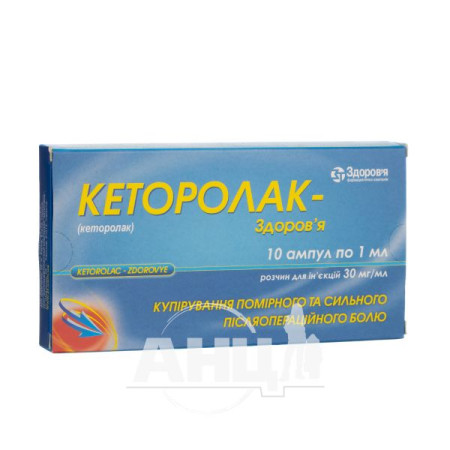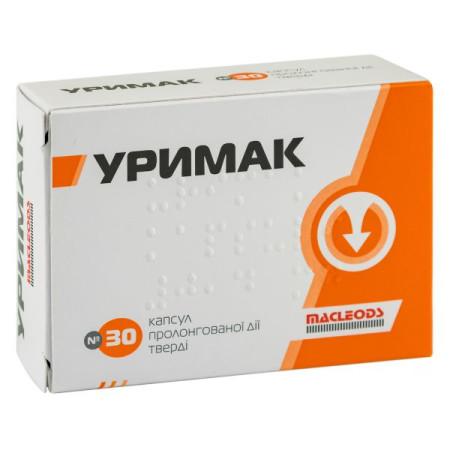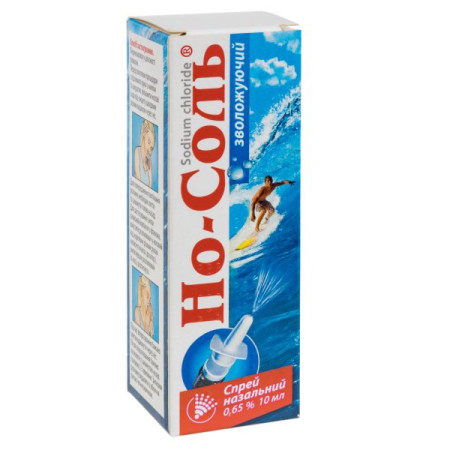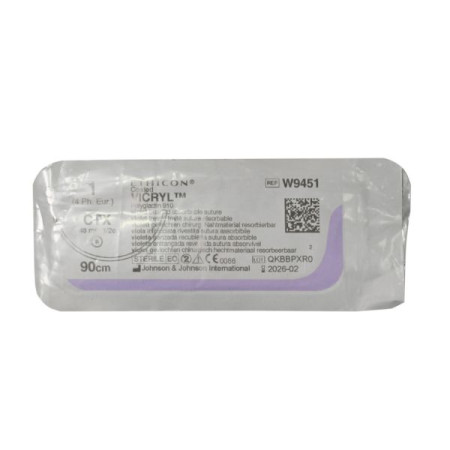Helpex Anticold Neo for children powder for oral solution sachet 2.5 g with raspberry flavor No. 6

Instructions for Helpex Anticold Neo for children powder for oral solution sachet 2.5 g with raspberry flavor No. 6
Composition
active ingredients: paracetamol, levocetirizine dihydrochloride;
1 sachet of 2.5 g contains paracetamol 320 mg, levocetirizine dihydrochloride 1.25 mg;
excipients: aspartame (E 951), sucralose, raspberry flavoring, colloidal anhydrous silicon dioxide, mannitol (E 421), betanin (E 162), sucrose.
Dosage form
Powder for oral solution with raspberry flavor.
Main physicochemical properties: almost white powder with a light pink tint, the presence of dark red particles is possible.
Pharmacotherapeutic group
Analgesics and antipyretics. Anilides. Paracetamol, combinations without psycholeptics.
ATX code N02B E51.
Pharmacological properties
Pharmacodynamics
Combined drug for the symptomatic treatment of acute respiratory viral infections, flu and colds. Has antipyretic, analgesic, antiallergic and weak anti-inflammatory properties. Eliminates symptoms of nasal congestion, runny nose, tearing, sneezing, headache, body aches.
Paracetamol has analgesic, antipyretic and weak anti-inflammatory effects.
The mechanism of action of paracetamol is associated with the drug's effect on the thermoregulation center in the hypothalamus, its ability to inhibit the synthesis of prostaglandins and inflammatory mediators (kinin, serotonin), and an increase in the pain threshold.
Levocetirizine dihydrochloride is a non-sedating antihistamine, an active stable R-enantiomer of cetirizine, belonging to the group of competitive histamine antagonists. The pharmacological action is due to the blocking of H1-histamine receptors. The affinity for H1-histamine receptors of levocetirizine is 2 times higher than that of cetirizine. It affects the histamine-dependent stage of the development of an allergic reaction, reduces eosinophil migration, vascular permeability, limits the release of inflammatory mediators. It prevents the development and suppresses the course of allergic reactions, has antiexudative, antipruritic, anti-inflammatory effects, does not have anticholinergic and antiserotonin effects, does not penetrate the central nervous system.
Levocetirizine inhibits the late phase of the inflammatory response induced in patients by intradermal administration of kallikrein. It also reduces the expression of adhesion molecules such as ICAM-1 and VCAM-1, which are markers of allergic inflammation. By reducing the adhesion of ICAM-1, an indirect antiviral effect is exerted, since cell resistance to rhinovirus increases. Levocetirizine also reduces the level of secondary adhesion of Staphylococcus aureus and Haemophilus influenzae to nasopharyngeal epithelial cells infected with rhinovirus.
Pharmacokinetics
Paracetamol is rapidly and almost completely absorbed from the gastrointestinal tract. The half-life is 1–4 hours. It is evenly distributed in all body fluids. Binding to plasma proteins is variable. It is excreted mainly by the kidneys in the form of conjugated metabolites.
Levocetirizine dihydrochloride. Pharmacokinetic parameters have a linear relationship and are almost the same as those of cetirizine. Rapidly absorbed when administered orally, food intake does not affect the extent of absorption, but reduces its rate.
There is no information on the distribution of levocetirizine in human tissues, as well as on its penetration through the blood-brain barrier. The volume of distribution is 0.4 l/kg. Plasma protein binding is 90%.
About 14% of levocetirizine is metabolized in the body. Given the low degree of metabolism and the lack of increased inhibitory effect, the interaction of levocetirizine with other substances (and vice versa) is unlikely.
Excretion of the drug occurs mainly due to glomerular filtration and active tubular secretion. The half-life (T1/2) is 7.9 ± 1.9 hours, total clearance is 0.63 ml/min/kg. It does not accumulate, it is completely excreted from the body in 96 hours. 85.4% of the dose of the active substance is excreted unchanged in the urine, about 12.9% - in the feces.
In patients with impaired renal function (creatinine clearance < 40 ml/min), the clearance of levocetirizine is reduced, and the half-life (T1/2) is prolonged (for example, in patients on hemodialysis, the total clearance is reduced by 80%), which requires the selection of an appropriate dosage regimen. During standard 4-hour hemodialysis, a small part (less than 10%) of levocetirizine is removed. Penetrates into breast milk.
Indication
Treatment of symptoms that occur during acute respiratory viral infections, influenza (to reduce elevated body temperature, reduce runny nose, relieve swelling of the nasal mucosa, relieve headaches, eliminate body aches).
Contraindication
Hypersensitivity to any component of the drug, piperazine derivatives in history. Blood diseases (including severe anemia, leukopenia). Severe liver and/or kidney dysfunction (creatinine clearance < 10 ml/min). Congenital hyperbilirubinemia, glucose-6-phosphate dehydrogenase deficiency, alcoholism.
Interaction with other medicinal products and other types of interactions
the elimination of antibiotics from the body may be slowed down;
barbiturates reduce the antipyretic effect of paracetamol;
with simultaneous use of paracetamol with hepatotoxic agents, the toxic effect on the liver increases;
Inducers of liver microsomal enzymes (anticonvulsants (phenytoin, barbiturates, carbamazepine), rifampicin), alcohol and isoniazid increase the hepatotoxicity of paracetamol;
metoclopramide and domperidone increase, and cholestyramine, antacids and food reduce the absorption of paracetamol;
tetracycline increases the risk of developing anemia and methemoglobinemia caused by paracetamol;
paracetamol reduces the effectiveness of diuretics;
Taking paracetamol may affect the results of blood glucose and uric acid tests.
With simultaneous long-term use, the anticoagulant effect of coumarins (e.g. warfarin) is enhanced, increasing the risk of bleeding.
Concomitant use of paracetamol with nonsteroidal anti-inflammatory drugs increases the risk of renal dysfunction.
No interaction studies have been conducted with levocetirizine. Studies with cetirizine (racemic mixture) have shown that concomitant use with antipyrine, pseudoephedrine, cimetidine, ketoconazole, erythromycin, azithromycin, glipizide or diazepam does not reveal clinically significant adverse interactions. When co-administered with theophylline (400 mg/day), a small decrease (by 16%) in the total clearance of levocetirizine was observed (theophylline distribution was not changed). In a study of multiple doses of ritonavir (600 mg twice daily) and cetirizine (10 mg daily), the exposure of cetirizine increased by approximately 40%, while the distribution of ritonavir was slightly impaired (-11%) with concomitant use of cetirizine.
Concomitant use of cetirizine or levocetirizine and alcohol or other central nervous system depressants in susceptible patients may cause additional impairment of alertness and ability to perform work.
Application features
Do not exceed the indicated dose; do not take the drug simultaneously with other products containing paracetamol, as paracetamol overdose is possible, which can cause liver failure.
You should consult a doctor if symptoms persist and/or are accompanied by a high fever that lasts more than 3 days; if the headache becomes persistent.
Do not use simultaneously with medications that contain alcohol.
Before using the drug, patients who take analgesics every day for mild arthritis; patients who use warfarin or similar drugs that have an anticoagulant effect; patients with liver disease (the risk of hepatotoxic effects of paracetamol increases) or kidney disease should consult a doctor.
Cases of liver failure/dysfunction have been reported in patients with reduced glutathione levels, e.g. in severe wasting, anorexia, low body mass index or chronic alcoholism. Patients with reduced glutathione levels, e.g. in severe infections such as sepsis, are at increased risk of metabolic acidosis when taking paracetamol. Symptoms of metabolic acidosis include deep, rapid or difficult breathing, nausea, vomiting, loss of appetite. You should seek medical attention immediately if these symptoms occur.
Use with caution in patients with chronic renal failure (dosage regimen adjustment required) and in elderly patients with renal failure (possible decrease in glomerular filtration).
Use the drug with caution in patients prone to urinary retention (e.g. spinal cord injury, prostatic hyperplasia), as levocetirizine increases the risk of developing urinary retention; in patients at risk of seizures or epilepsy.
There is no evidence of an increase in the effect of sedatives when used in therapeutic doses. However, the use of sedatives should be avoided while taking the drug.
Antihistamines suppress the skin allergy test, so before conducting it, the drug must be stopped 3 days before the test (withdrawal period).
The preparation contains aspartame, which is a source of phenylalanine, so the preparation should not be used by patients with phenylketonuria. The preparation contains sucrose, so patients with established intolerance to some sugars should consult a doctor before taking this medicinal product.
Ability to influence reaction speed when driving vehicles or other mechanisms
You should refrain from activities that require increased speed of psychomotor reactions.
Use during pregnancy or breastfeeding
The medicine is intended for use in children.
Method of administration and doses
Children aged 6 to 10 years: 1 sachet up to 4 times a day.
The intervals between doses should be at least 4 hours.
Do not exceed the recommended dose. The maximum duration of use without consulting a doctor is 3 days. Further use is possible only under the supervision of a doctor.
Children
The medicine is intended for use in children aged 6 to 10 years.
Overdose
Liver damage is possible in adults who have taken 10 g or more of paracetamol or 5 g in the presence of risk factors, and in children who have taken more than 150 mg/kg of body weight.
In case of paracetamol overdose, symptoms develop in the first 24 hours: pallor, nausea, vomiting, loss of appetite, abdominal pain.
The first clinical and biochemical signs of liver damage may appear 12–48 hours after overdose. Disorders of glucose metabolism, hypokalemia and metabolic acidosis (including lactic acidosis), increased activity of hepatic transaminases, increased bilirubin levels and increased prothrombin index, and hemorrhage may occur.
Occasionally, nephrotoxicity has been observed from the urinary system, including renal colic, interstitial nephritis, and acute renal failure with acute tubular necrosis, which may present with severe lower back pain, hematuria, and proteinuria and may develop even in the absence of severe liver damage.
In severe cases, liver damage (hepatocellular necrosis) and deterioration of liver function are possible, which can progress to hepatic encephalopathy, hepatic coma, cerebral edema and be fatal.
In patients with risk factors (long-term treatment with carbamazepine, phenobarbital, phenytoin, primidone, rifampicin, St. John's wort or other drugs that induce liver enzymes; alcoholism; glutathione cachexia (digestive disorders, cystic fibrosis, HIV infection, starvation, cachexia)), the use of 5 g or more of paracetamol may lead to liver damage.
Cardiac arrhythmia and acute pancreatitis, usually accompanied by liver dysfunction and hepatotoxicity, have also been reported.
When taking large doses, the central nervous system experiences disorientation.
With prolonged use of the drug in high doses, aplastic anemia, pancytopenia, agranulocytosis, neutropenia, leukopenia, and thrombocytopenia may develop on the part of the hematopoietic organs.
Treatment of overdose: In case of overdose, immediate medical attention is required. The patient should be taken to a hospital immediately, even if there are no early symptoms of overdose.
Symptoms may be limited to nausea and vomiting and may not reflect the severity of the overdose or the risk of organ damage. Gastric lavage should be performed within the first hours of a suspected overdose. Treatment with activated charcoal may be appropriate if the overdose of paracetamol was taken within 1 hour.
The concentration of paracetamol in the blood plasma should be measured 4 hours or later after ingestion (earlier concentrations are unreliable). Intravenous N-acetylcysteine is used within 24 hours after ingestion of paracetamol according to current recommendations, the maximum effect of the use occurs within 8 hours after ingestion of paracetamol, after which the effectiveness of the antidote decreases sharply. In the absence of vomiting, oral methionine can be used as a suitable alternative in remote areas outside the hospital.
Symptoms of levocetirizine dihydrochloride overdose may include drowsiness in adults and initial agitation and increased irritability followed by drowsiness in children.
Treatment of overdose. There is no specific antidote for levocetirizine. In case of symptoms of overdose, symptomatic and supportive therapy is recommended. Gastric lavage may be considered shortly after ingestion. Hemodialysis is not effective in removing levocetirizine from the body.
Adverse reactions
Immune system: hypersensitivity reactions, including itching, rash on the skin and mucous membranes, angioedema, anaphylactic shock, erythema multiforme exudative, Stevens-Johnson syndrome, toxic epidermal necrolysis (Lyell's syndrome).
Nervous system: drowsiness, headache, fatigue, weakness, asthenia, tremor, convulsions, paresthesia, dizziness, fainting, dysgeusia.
Psychiatric: sleep disturbances, aggression, agitation, insomnia, suicidal thoughts, hallucinations, depression.
On the part of the organs of vision: visual impairment, blurred vision.
Cardiac: palpitations, tachycardia.
Renal and urinary disorders: dysuria, urinary retention.
From the organs of hearing and balance: vertigo.
Respiratory system: bronchospasm in patients sensitive to aspirin and other nonsteroidal anti-inflammatory drugs, shortness of breath.
On the part of the digestive tract: nausea, vomiting, dry mouth, abdominal pain, diarrhea, constipation, increased appetite.
From the hepatobiliary system: impaired liver function, increased activity of liver enzymes, usually without the development of jaundice, hepatitis.
On the part of the endocrine system: hypoglycemia, up to hypoglycemic coma.
From the blood and lymphatic system: anemia, including hemolytic anemia, bruising or bleeding; sulfhemoglobinemia and methemoglobinemia (cyanosis, shortness of breath, heart pain); agranulocytosis, thrombocytopenia.
General disorders: edema, weight gain.
Expiration date
4 years.
Storage conditions
Store out of the reach of children in the original packaging at a temperature not exceeding 25 °C.
Packaging
2.5 g of powder in a sachet; 6 sachets in a cardboard pack.
Vacation category
Without a prescription.
Producer
Alpex Pharma SA.
Location of the manufacturer and its business address
Via Cantonale, 6805 Mezzovico-Vira, Switzerland.
There are no reviews for this product.
There are no reviews for this product, be the first to leave your review.
No questions about this product, be the first and ask your question.


















